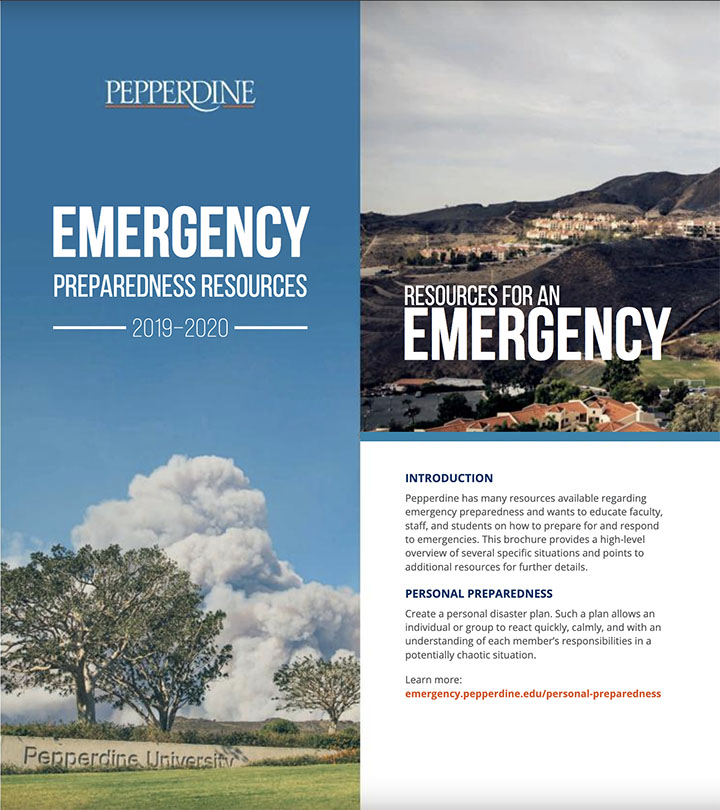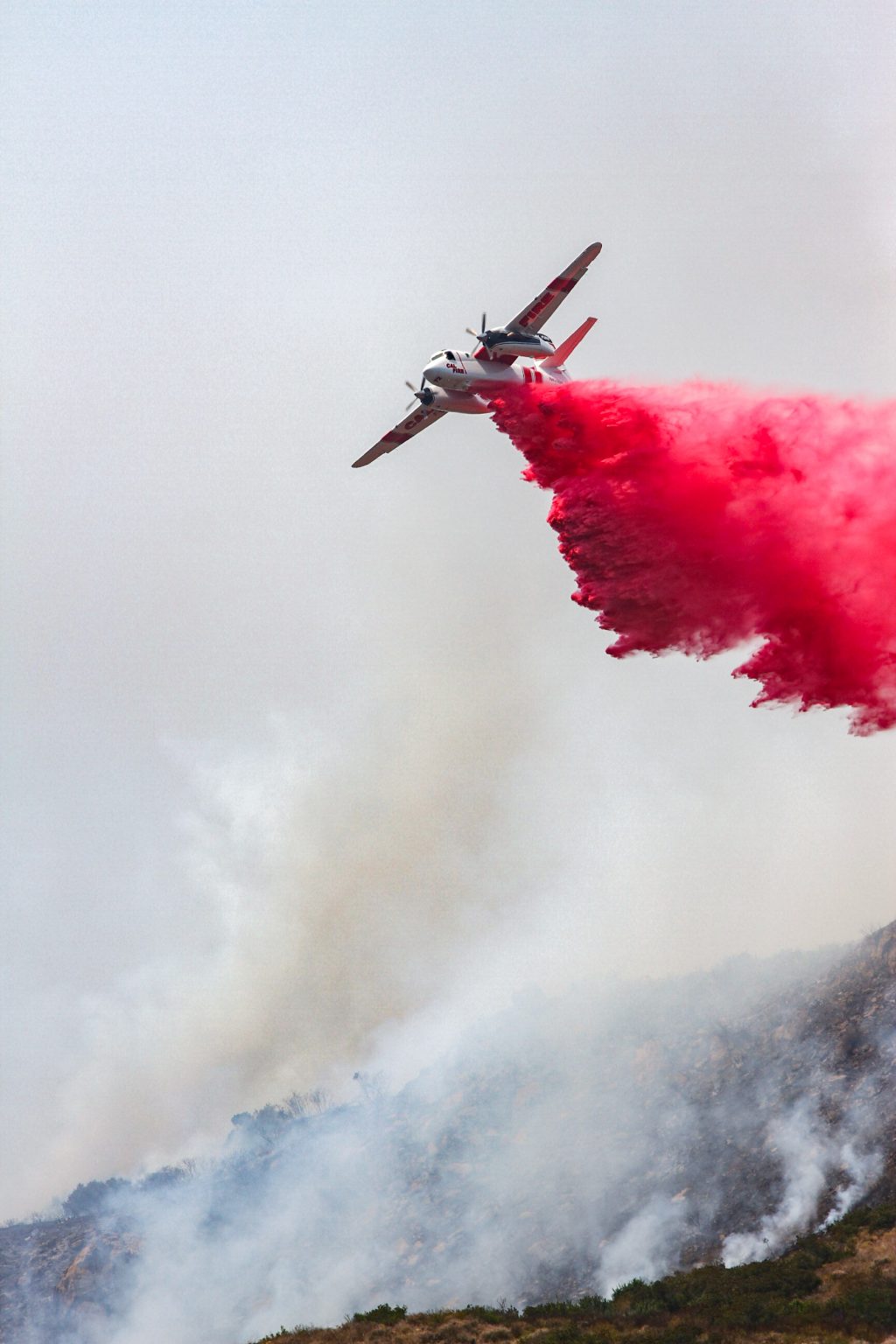Helicopters dropped water on the Sweetwater Fire. Photo by Milan Loiacono.
Situated on the San Andreas fault line and in a high-risk fire zone, Pepperdine is prone to natural disasters. The university’s Office of Insurance and Risk Management continually refines its plan in the case one of these natural disasters were to affect Pepperdine.
The Woolsey Fire burned almost 97,000 acres and destroyed more than 1,500 structures between Oak Park and Malibu last November, according to the Los Angeles Times. Over 1,000 Pepperdine students sheltered-in-place. Following this event, both Pepperdine and the City of Malibu have made revisions to their emergency plans and how they communicate them.
Almost a year later, Pepperdine is facing another wildfire season, but it may look differently, Interim Director for the Office of Insurance and Risk Management Jon Weber said.
“[The Woolsey Fire] has been described as a once-in-a-hundred-years fire based on LA County history,” Weber said. “That’s the worst fire they’ve ever seen. With that said, we could still have a wildfire.”
Weber said the difference between last year’s and this year’s fire predictions have to do with the amount of brush from previous years.
“When Woolsey burned, it burned all the brush that had piled up over the years since the previous fire,” Weber said. “Now, we had a fire a year ago, so there’s not nearly as much fuel on the hillsides.”
Weber said if a fire happens this season, it is likely to burn out more quickly and at lower temperatures than the Woolsey Fire. The Sweetwater Fire that started and ended Friday, August 30, 2019 was an example of this type of fire. The fire only burned for three and a half hours before it was 95% contained. There was no wind during the fire. Santa Ana winds can exacerbate a fire.
Photo by Milan Loiacono.
Emergency Preparedness Plans
Weber said the Office of Insurance and Risk Management constantly works to refine its emergency procedure plan, but remains firm in the wide scope.
“We’ve continued to review the shelter-in-place plan with the [Los Angeles] Fire Department and they are still absolutely supportive of it,” Weber said. “After Woolsey, I had a list of 70-plus action items, and we’ve worked through a lot of those already. But there are still little tweaks here and there.”
Weber’s team meets with the LA County Fire Department annually and remains in constant email communication with them to ensure the emergency plan is up-to-date. He said the plan acts as a living document.
“That’s a key relationship for us because we know our plan doesn’t work unless they support us,” Weber said. “We can’t shelter-in-place unless we know that the fire department has told us, ‘Yes, this is the right thing for you to do. When the flames get to campus, we will be there to help protect you.’”
If there were to be another major fire this semester, Weber said the plan would be very similar to the shelter-in-place plan they put into effect during the Woolsey Fire.
Senior Sam Hehir said she agrees with the effectiveness of the emergency plan. She sheltered-in-place at Pepperdine during the Woolsey Fire.
“I felt totally fine because of the way Pepperdine’s geography is made,” Hehir said. “The fire encircles the students but at the same time it will never reach us. Even if that sounds a little terrifying, it makes sense.”
Education for Students
The Office of Insurance and Risk Management collaborates with the Emergency Operations Committee every year to educate incoming students and their parents during New Student Orientation.
In this presentation, they give an overview of emergency operations, answer questions and direct everyone to their website.
The main source of emergency updates and protocol is Pepperdine’s Emergency Information website, which functions as a blog.

Photo courtesy of Pepperdine University.
Each student who lives on campus receives a hard copy of a brochure that details general emergency preparedness resources at Pepperdine. Weber said he is currently working with Student Affairs to ensure that commuter students receive a copy as well. A digital copy of this brochure is available online.
Additionally, two informational videos on brush fires and the shelter-in-place system are available on Pepperdine’s emergency website.
The shelter-in-place video features the voices of students who experienced the practice firsthand.
“Getting our students to share it helps to show that this is something that everybody needs to be concerned about,” Weber said. “It’s not just one person being the champion of it.”
Both the informational videos and the brochure have been on the emergency website since before the Woolsey Fire. They have each been updated since the fire to reflect the severity of a potential disaster.
Revisions to Malibu Emergency Protocol
Malibu City Council members found an outside firm to create an unbiased report on the city’s response to the Woolsey Fire. The result was a list of 53 suggestions for improvement.
“The city has already done or is in the process of doing most of the things they recommended in the report,” City Council Member Mikke Pierson said.
Key points from this report include a tiered evacuation plan, more training for staff and improved communication when power is lost.
“We bought 50 high power electronic megaphones,” Pierson said. “So, if need be, the staff will be trained to go neighborhood to neighborhood telling people what’s going on. It’s a very difficult job to communicate with citizens without power.”
The city also purchased 9,000 local cell phone numbers so it can reverse 911 call those numbers in an emergency.
Pierson said while every area of the report is being worked on, the city is now working towards becoming prepared for the “new normal” after Woolsey.
“The Woolsey Fire exceeded all preparation,” Pierson said. “Nobody had quite envisioned there’d be three major fires, that we would be last on resources, 70 miles wind, very dry conditions and a massive fuel load. All of our scenarios now include that and worse.”
____________________
Email Vernie Covarrubias: vernetta.covarrubias@pepperdine.edu

